Recovering nature: building on Georgina Mace's work to ensure a biodiverse and liveable future
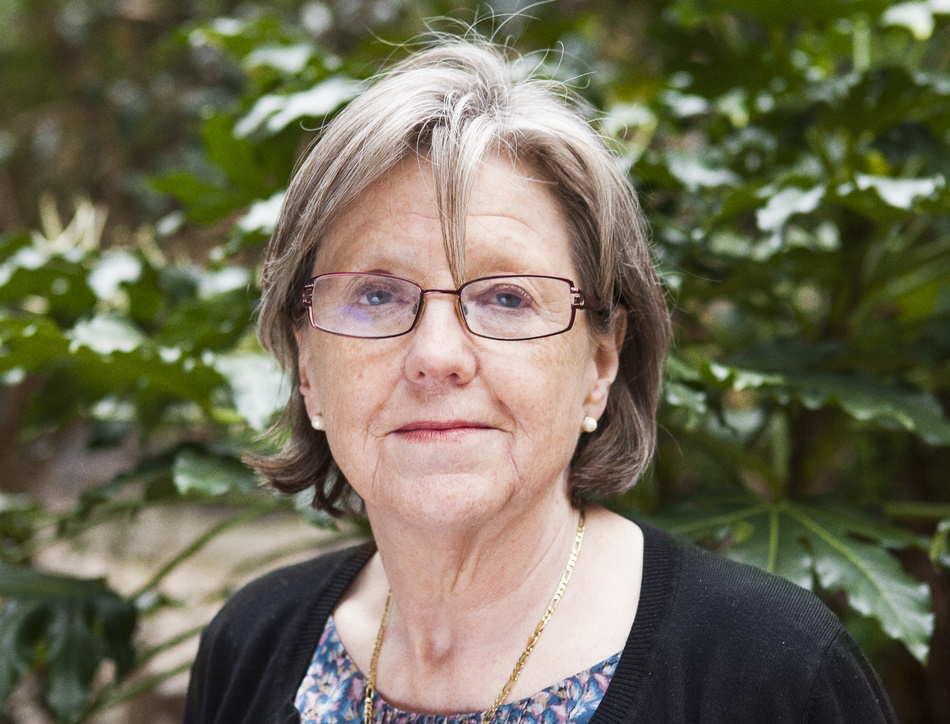
Scientific discussion meeting organised by Professor Jon Bridle, Professor Andrew Balmford FRS, Professor Sarah Durant, Professor Richard Gregory, Professor Kate Jones, Professor Richard Pearson, Professor Andy Purvis and Professor Vincent Savolainen.
Our understanding of the patterns and rate of biodiversity loss, and their consequences for human societies has been transformed by the ideas, insight and energy of Georgina Mace (1953–2020). This meeting highlighted how Georgina’s work repeatedly changed the conversation about how we measure biodiversity, its value, and our relationship with nature, and showcased scientists building on her enormous accomplishments.
The schedule of talks, speaker biographies and abstracts are available to view below.
Philosophical Transactions B
Discussion meeting issue ‘Bending the curve towards nature recovery: building on Georgina Mace's legacy for a biodiverse future’ organised and edited by Jon Bridle, Andrew Balmford, Sarah M Durant, Richard D Gregory, Richard Pearson and Andy Purvis Vol. 380, No. 1917, (January 2025) This issue is now available online.
Aerial view of the Borneo rainforest. Credit: Hasselblad.
Organisers
Schedule
Chair
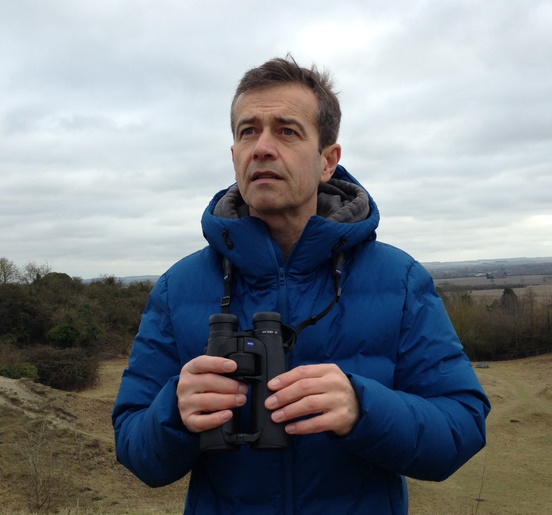
Professor Richard Gregory, RSPB, University College London, UK

Professor Richard Gregory, RSPB, University College London, UK
Professor Richard Gregory is an ecologist and ornithologist with research interests in conservation and biodiversity science, linking science with practice and policy making. Specific interest in biological survey design, biodiversity monitoring, metrics and indicators, climatic change, citizen science, conservation priorities, conservation efficacy, measuring natural capital and ecosystem services, and understanding the impacts of land use and climate change on nature. Promoting evidence-based decision making relating to the environment in a range of practical, academic, policy/political arenas in UK, wider Europe and Globally. Aiming to bridge the gap between biodiversity science, practice and policy making for nature, climate and people. Head of Monitoring at the RSPB Centre for Conservation Science and Honorary Professor at the Centre for Biodiversity and Environment Research, University College London.
| 09:05-09:30 |
Two decades of the Red List Index
The Red List Index (RLI) was first developed 20 years ago by a group of conservation scientists including Georgina Mace. It shows trends over time in aggregate survival probability (the inverse of extinction risk) for sets of species. It is calculated from the number of species in each IUCN Red List category, and the number moving between categories between assessments owing to genuine improvement or deterioration in status. The global RLI is aggregated across multiple taxonomic groups, and can be disaggregated to show trends for different subsets of species (e.g. pollinating, migratory, or wetland species), or to show trends driven by particular factors (e.g. international trade, invasive alien species’ impacts, or fisheries). National RLIs have been generated through either repeated assessments of national extinction risk in each country, or through disaggregating the global index and weighting each species by the proportion of its range in each country. The indicator has achieved wide policy uptake, including by the Convention on Biological Diversity, Convention on Migratory Species, Ramsar Convention on Wetlands, Convention on the International Trade in Endangered Species, Sustainable Development Goals, and Intergovernmental Science-Policy Platform on Biodiversity and Ecosystem Services. Future developments include expanding the taxonomic coverage, applying the RLI to the goals and targets of the Kunming-Montreal Global Biodiversity Framework, projecting the RLI under different scenarios, incorporating uncertainty in the underlying Red List assessments, and more sophisticated analysis of the factors driving RLI trends. 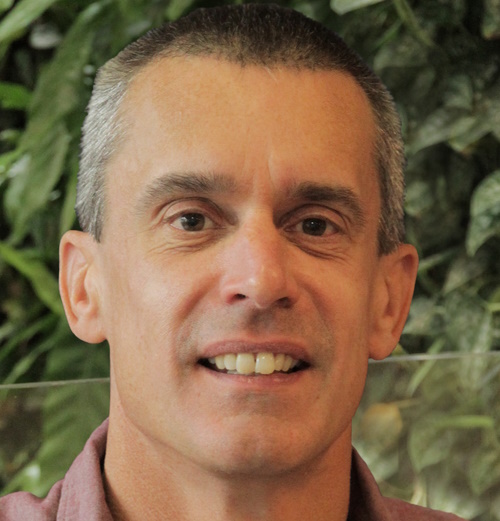
Dr Stuart Butchart, BirdLife International, UK

Dr Stuart Butchart, BirdLife International, UKStuart Butchart is Chief Scientist at BirdLife International, and lead BirdLife’s global Science Division, which develops and manages BirdLife’s global scientific datasets, and undertakes research to underpin the Conservation Programmes implemented by the BirdLife Partnership of nearly 120 national biodiversity conservation organisations around the world, and to provide a sound scientific basis for BirdLife’s policy, advocacy and communication work. This includes identifying which bird species worldwide are closest to extinction - by regularly assessing all 11,000 bird species for the IUCN Red List (as Red List Authority for birds for IUCN). It also includes supporting BirdLife Partners to identify some of the most important sites for biodiversity: Important Bird and Biodiversity Areas, which are part of a wider network of Key Biodiversity Areas. The Science Division also undertakes a wide range of collaborative research to understand better the state of the world’ birds and the sites and habitats they depend upon, the threats to them, and the conservation solutions required. |
|---|---|
| 09:30-09:45 |
Discussion
|
| 09:45-10:15 |
Measuring how and why global biodiversity is changing using the Living Planet Index
The Living Planet Index (LPI) is one of a suite of indicators used to measure changes in biodiversity globally. Based on vertebrate population data collected from monitoring sites around the world, it can provide a sensitive tool for analysing trends at different scales. The LPI was originally developed a quarter of a century ago to provide an insight into trends in species globally. This was at a time when threats to nature were increasing but very few indicators existed to measure the anthropogenic impact on biodiversity. In 2006, a partnership between the Zoological Society of London (ZSL) and WWF was initiated to continue development of the LPI with instrumental support from Georgina Mace, then Director of Science at ZSL. Since then, the indicator and data set supporting the LPI has been expanded to develop a detailed understanding of patterns in vertebrate populations. This talk will outline the LPIs contribution to the field of biodiversity indicators, and how it has been used to measure the changing status of global biodiversity through applications in research. The LPI has informed many policy instruments by documenting evidence of progress towards national and global targets. Whilst to date the LPI has recorded overall declines in biodiversity around the world, this talk will explore its utility in also measuring the recovery of nature. 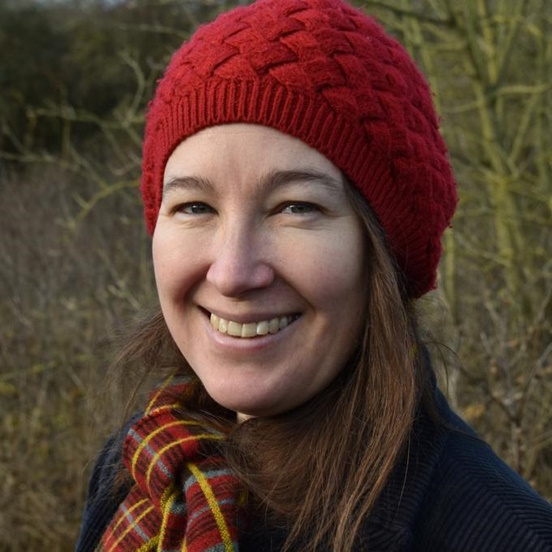
Ms Louise McRae, Institute of Zoology, UK

Ms Louise McRae, Institute of Zoology, UKLouise McRae is a conservation scientist from the Zoological Society of London, based in the Institute of Zoology. Her research interests lie in tackling the complexities of measuring trends in biodiversity, understanding what the drivers are, and communicating outputs in a helpful way to inform the public as well as policymakers. For the past 15 years, she has been working in partnership with WWF on the development and implementation of the Living Planet Index, a global biodiversity indicator based on vertebrate populations trends monitored around the globe. In that time, she has contributed to biennial Living Planet Reports, WWF’s flagship publication reporting on the state of the natural world. She was a lead author of the ‘Biodiversity’ chapter of the 6th Global Environment Outlook and has contributed to the evidence base behind other international reports such as Global Biodiversity Outlooks, Global Wetland Outlook and IPBES global, regional and thematic assessments. |
| 10:15-10:30 |
Discussion
|
| 10:30-11:00 |
Break
|
| 11:00-11:30 |
Biodiversity in economics and finance
The global, independent Dasgupta Review on the Economics of Biodiversity explored how and why we have failed to integrate nature into decision-making and what we can do about it. Georgina Mace participated on the Dasgupta Review’s Advisory Panel, and provided counsel to Professor Dasgupta and his team throughout the drafting of the Review, including on her areas of expertise in biodiversity science and valuing biodiversity. This talk will introduce the Dasgupta Review, Georgina Mace’s contributions, the options for change it set out, and its recommendations for institutional change in the financial system. 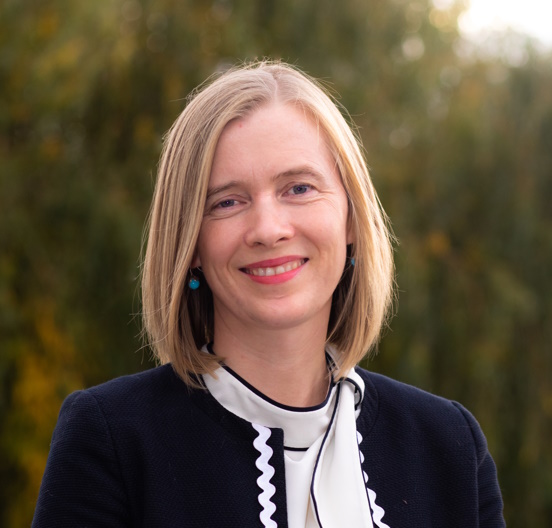
Dr Emily McKenzie, Taskforce on Nature-related Financial Disclosures, UK

Dr Emily McKenzie, Taskforce on Nature-related Financial Disclosures, UKEmily is the Technical Director at the TNFD Secretariat where she oversees the technical development of the TNFD framework for management and disclosure of nature-related issues. She previously led the analytical team that produced the independent, global Dasgupta Review on the Economics of Biodiversity, based at HM Treasury. Emily helped develop the Natural Capital Protocol and worked for a decade in the WWF Global Science team, where she helped establish and lead the Natural Capital Project at Stanford University. She helped design the Environmental Land Management scheme in England – a major national agricultural subsidy reform programme – based at the UK Department of Environment, Food and Rural Affairs (Defra). She established environmental economics programmes at the Joint Nature Conservation Committee and at the Pacific Islands Applied Geoscience Commission as an Overseas Development Institute Fellow. She gained Masters degrees in International Policy at Stanford University and Economics at the University of Cambridge. |
| 11:30-11:45 |
Discussion
|
| 11:45-12:15 |
Accounting for functionality in the identification of global conservation priorities: promises and pitfalls
The application of the Red List Categories and Criteria to comprehensive assessments of entire taxonomic groups – including the collation of associated data on species distributions – marked a turning point in conservation planning and practice aimed at maintaining global species diversity. More recently, the combination of these spatialised datasets with information on individual species’ traits has enabled large-scale mapping of functional diversity and rarity, raising the promise that conservation planning can be extended beyond protecting species to the maintenance of ecosystem functionality. In this presentation, Dr Rodrigues will review how the aim to protect ecosystem functionality has been integrated into large-scale conservation priority setting. She will argue that there is often a mismatch between the arguments presented to justify the importance of a functional approach to conservation and the methods applied to identify priority areas and species. In particular, applications of functional diversity and rarity as biodiversity metrics in conservation planning are poorly supported by evidence that these metrics do reflect ecosystem function. Other promising routes for integrating functionality into conservation planning come from the development of the Red List of Ecosystems, Green Status assessments of Species, and the identification of Key Biodiversity Areas. Dr Ana Rodrigues, National Centre for Scientific Research, France
Dr Ana Rodrigues, National Centre for Scientific Research, FranceAna Rodrigues is a Senior Researcher at the CNRS (Centre National de la Recherche Scientifique) in Montpellier, France. Her research lies at the interface between ecology and biodiversity conservation, with the study of large-scale spatial biodiversity patterns as the unifying theme. She aims to understand the ecological, evolutionary and anthropogenic processes shaping these patterns, as well as their implications for the conservation of biodiversity. This includes a research line investigating historical human impacts on the distribution and abundance of whale species, in collaboration with historians and archaeologists.
She obtained a first degree in 1996 and MSc in 1998 from the University of Lisbon (Portugal) followed in 2002 by a PhD from the University of Sheffield (2002). She was then a postdoctoral fellow at Conservation International in Washington DC (USA), and a Marie Sklodowska-Curie fellow at the University of Cambridge (UK), before joining the CNRS as a researcher in 2009. |
| 12:15-12:30 |
Discussion
|
Chair

Professor Vincent Savolainen, Imperial College London, UK

Professor Vincent Savolainen, Imperial College London, UK
Professor Vincent Savolainen is the Director of the Georgina Mace Centre for the Living Planet, a College initiative that brings together a multi-disciplinary group of researchers to tackle some of the greatest environmental challenges. Professor Savolainen is a Fellow of the Zoological Society of London, Fellow of the Linnean Society of London, and a Fellow of the Royal Society of Biology. In 2006, he was awarded the Linnean Society’s Bicentenary Medal. In 2008, he was awarded a European Research Council Advanced Grant, and the following year a Royal Society Wolfson Research Merit Award. In 2014, he was elected a Member of EMBO. His group combines field ecology, molecular phylogenetics, and population genomic approaches to key societal challenges, from explaining the origin of biodiversity to finding solutions for its preservation in a rapidly changing world. Recent research also tackles the Darwinian paradox of sexual orientation.
| 13:30-14:00 |
Bending the curve of biodiversity loss requires a ‘sat-nav’ for nature
Georgina Mace urged the global community to aim higher to bend the curve of biodiversity loss. She then convened the most ambitious ensemble of global biodiversity models to show the types and magnitude of policy interventions that bending the curve would require. This talk focuses on some of the obstacles that the new global biodiversity monitoring framework must overcome if such ambitious targets for nature are to be met. Meeting time-bound targets efficiently requires adaptive management, which in turn requires a ‘sat-nav’ for nature. The two main pillars of such a sat-nav are (1) models that predict future consequences of today’s choices, and (2) rapid feedback from monitoring to enable course corrections and model improvements. The same elements are needed by organisations wishing to ensure that their actions are nature-positive, but neither is yet written into the global biodiversity monitoring framework. Some of the obstacles ahead are purely scientific. For example, whereas developing climate models were able to use rich time series from the instrumental record and proxies, no comparable data are available for developing biodiversity models. Some obstacles, such as the lack of a Biodiversity Model Intercomparison Program analogous to CMIP for climate models, could be overcome relatively rapidly with funding. The cultures within biodiversity science and science-policy have themselves thrown up some obstacles, such as a leaky pipe for data and disincentives for improving indicators, which also need addressing if we are to bend the curve of biodiversity loss. 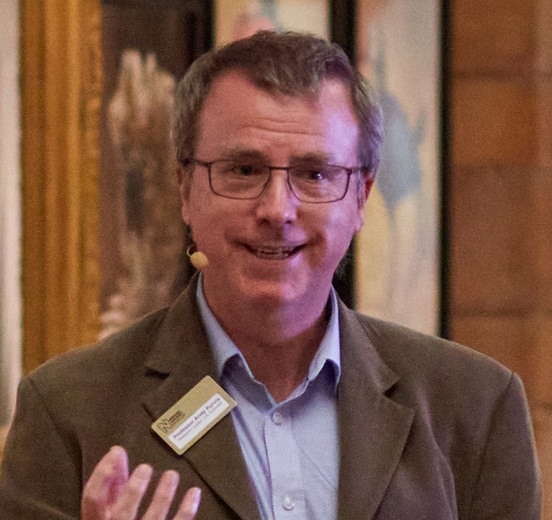
Professor Andy Purvis, Natural History Museum, University College London and Imperial College London, UK

Professor Andy Purvis, Natural History Museum, University College London and Imperial College London, UKProfessor Andy Purvis is a Research Leader at the Natural History Museum, London and a research associate in the Georgina Mace Centre for the Living Planet. Starting in 1996, Georgina lured him gradually from macroevolution into biodiversity conservation. He leads the PREDICTS project (Projecting Responses of Ecological Diversity In Changing Terrestrial Systems), which aims to model globally how local terrestrial biodiversity responds to human pressures and to use these models to project potential biodiversity futures corresponding to different policies and decisions. He was a Coordinating Lead Author on the first IPBES Global Assessment of biodiversity and ecosystem services, scientific advisor on Sir David Attenborough’s documentary, 'Extinction: The Facts', and a contributor to Greta Thunberg’s recent Climate Book. |
|---|---|
| 14:00-14:15 |
Discussion
|
| 14:15-14:45 |
Plant diversity in a changing world
Climate change drives biodiversity change, causing range shifts that alter species richness and composition with negative impacts on ecosystem services, and the question of species' ability to adapt remains unresolved. Here, Assistant Professor Daru will explore the effect of climate change on global plant diversity using species distribution models and climatic projections. He will investigate changes in geographic distribution of plant species worldwide and predict the extent to which global plant diversity will change under current and future climate, including range shift velocities required for plant species to keep up with future climate change. In his research, he found that there will be widespread reductions in areas climatically suitable for plant growth in the future, with a global median reduction of 1.49%. Areas of plant diversity in the present are projected to experience increases in weighted endemism, supporting the projected decrease in range size for most species. His findings also predict plant communities across the Arctic, Eurasia, and the tropics, especially in west and central Africa, will experience pronounced losses in the spatial composition of β-diversity due to simultaneous local disappearance and introduction of new species. The velocities of range shifts across latitudes and elevations will vary across regions and plant clades. Assistant Professor Daru's study highlights the importance of predicting and conserving diversity at other trophic levels, as plants are foundation species that sustain food chains and drive terrestrial ecosystem productivity. 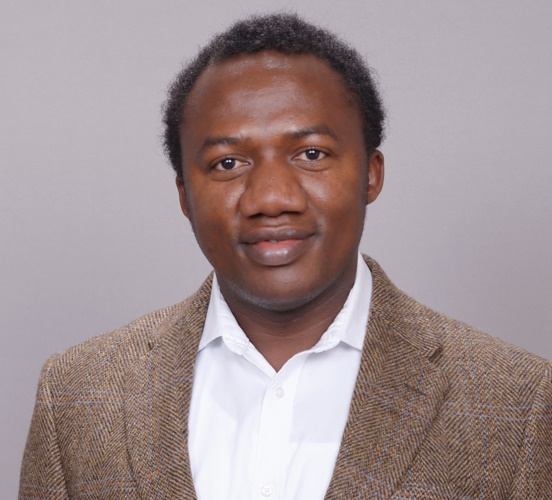
Assistant Professor Barnabas Daru, Stanford University, USA

Assistant Professor Barnabas Daru, Stanford University, USABarnabas holds a Masters and a PhD in Botany from the University of Johannesburg in South Africa. During his studies, he developed a passion for macroecology, biogeography and phylogenetics. Following his PhD, he secured a prestigious postdoctoral fellowship at Harvard University where he focused on innovative uses of herbarium specimens for ecological and evolutionary biology. Currently, Barnabas leads a research lab at Stanford University, where he focuses on the role of phylogeny in species distribution and the changing distribution patterns of plant communities in the Anthropocene era. When not conducting research, he enjoys swimming and spending quality time with his family. |
| 14:45-15:00 |
Discussion
|
| 15:00-15:30 |
Break
|
| 15:30-16:15 |
Contributed speakers
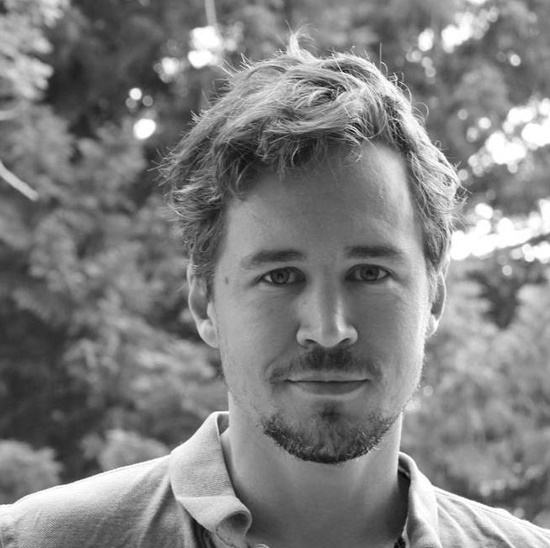
Dr Alex Pigot, University College London, UK

Dr Alex Pigot, University College London, UKDr Alex Pigot is a senior Research Fellow in the Centre for Biodiversity and Environment Research within UCL's Division of Biosciences. 
Dr Becks Spake, University of Reading, UK

Dr Becks Spake, University of Reading, UKDr Becks Spake is a Lecturer in the University of Reading's Ecology and Evolutionary Biology department. 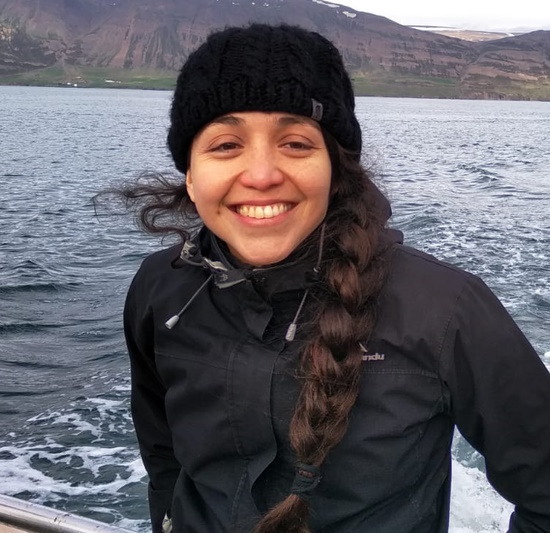
Dr Lupita Bribiesca Contreras, Natural History Museum, UK

Dr Lupita Bribiesca Contreras, Natural History Museum, UKDr Lupita Bribiesca Contreras is a Post-doctoral Researcher at the Natural History Museum, London. 
Dr Fiona Burns, RSPB, UK

Dr Fiona Burns, RSPB, UKAs part of the Monitoring Science team at the RSPB Centre for Conservation Science, Dr Fiona Burns works on a broad range of projects assessing and communicating the health of biodiversity. |
| 16:15-16:45 |
Getting a handle on the impacts of environmental change on tropical forests
In this talk Professor Lewis will describe some recent changes to intact tropical forests from large-scale and widely distributed long-term inventory plot networks from across the tropics, and then present some new research on the common species in tropical forests. The conclusion of which is that African, South American and Southeast Asian tropical forests are remarkably similar in terms of their proportion of common species. Remarkably, just ~1,000 tree species account for ~50% of all of the ~800 billion trees (>=10 cm trunk diameter) in Earth’s closed-canopy tropical forests. This is a tractably small number of tree species to understand their autecology and their likely responses to environmental change. This new understanding can open new research avenues in terms of tracking and modelling limited numbers of species that constitute >50% of the trees in a tropical forest to make improved predictions of the behaviour of tropical forests under today’s rapid environmental change. These results may also reveal fundamental mechanisms of ecosystem assembly that apply to all tropical forests, despite their differing biogeographical, environmental and anthropogenic histories. Professor Simon Lewis, University of Leeds and University College London, UK
Professor Simon Lewis, University of Leeds and University College London, UKSimon L Lewis is Professor of Global Change Science at the University of Leeds and University College London. A plant ecologist by training, he focuses on changes to the Earth system with a central focus on the tropics. He founded and co-manages the African Tropical Rainforest Observatory, AfriTRON (www.afritron.org), a network of long-term tropical forest inventory sites across 13 countries in Africa, and co-manages the long-term forest inventory data repository and data management tool forestplots.net. He recently discovered that the central Congo basin is home to the world's largest tropical peatland complex (Dargie, Lewis et al. Nature 2017). |
| 16:45-17:00 |
Discussion
|
Chair
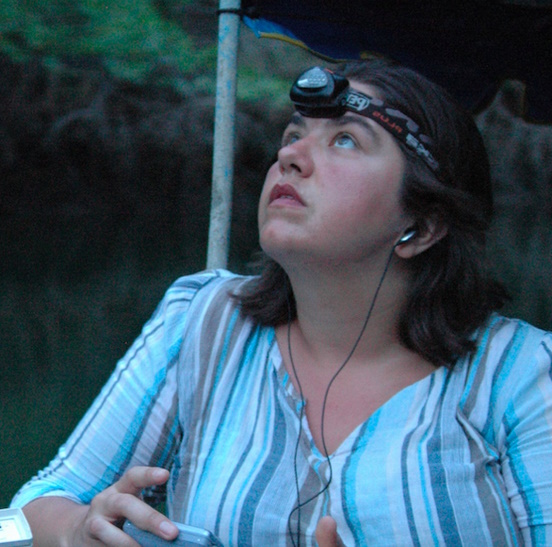
Professor Kate Jones, University College London, UK

Professor Kate Jones, University College London, UK
Kate Jones is Professor of Ecology and Biodiversity in the Department of Genetics, Evolution & Environment at University College London. Her research explores the connection between ecological and human health, with a focus on the impact of global land use and climate change on emerging infectious diseases from animals. Kate also develops innovative tools for monitoring wildlife populations, including the application of artificial intelligence and citizen science data. She directs The People and Nature Lab at UCL's new campus in London's Queen Elizabeth Olympic Park, is a scientific advisor for the UK government, and has won numerous awards for her contributions to Zoology, Conservation Biology, and Ecology.
| 09:00-09:30 |
Reconnecting people and nature for transformative climate change adaptation
The potential for nature-based transformation is now acknowledged as essential for pathways to sustainable futures. Yet, beyond generic principles and a rapidly increasing number of place-based case studies, we don’t have a structured, evidence-based understanding of how people can activate nature’s potential for transformative climate change adaptation. Here, Dr Lavorel assumes that success of local initiatives is underpinned by people-nature relationships. Specifically, she hypothesises that nature-based adaptation to climate and other global changes entails the recognition, strengthening and repair of linkages within nature, among people and between people and nature. She characterised case studies from multiple continents using criteria depicting the type and intensity of nature-nature, people-people and people-nature relationships: 1) criteria for nature-nature relationships capture properties associated with ecological resilience and transformation, 2) criteria for people-people relationships focus on processes of decision making underpinned by knowledge generation, equity and power relationships, and individual and institutional capacities, and 3) criteria for people-nature relationships are structured by the continuum from nature for people to people as nature. From this process synthesis Dr Lavorel identifies alternative pathways that reconnect people and nature for adaptation. She suggests that this understanding is essential for amplifying the local success of initiatives, for deployment across local socio-ecosystems and ultimately for transforming institutions and values. 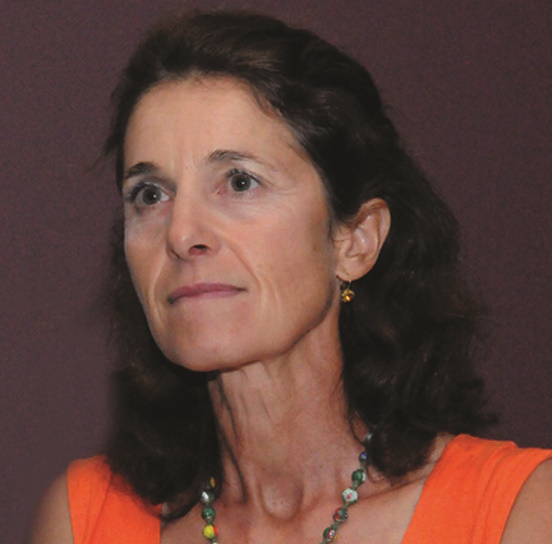
Dr Sandra Lavorel, Laboratoire d’Ecologie Alpine, Université Grenoble Alpes, Université Savoie Mont-Blanc, CNRS, France

Dr Sandra Lavorel, Laboratoire d’Ecologie Alpine, Université Grenoble Alpes, Université Savoie Mont-Blanc, CNRS, FranceSandra Lavorel is a functional ecologist known for her pioneering work on plant functional traits, taking them from concepts to the discovery of patterns of spatial and temporal variation across scales, and of their effects on ecosystem functions that underpin people’s quality of life. In recent years, she has focused on nature-based adaptation to climate change. Throughout her career she has been involved in global change science coordination and in assessments for science-policy interface, including IPBES. Sandra is a member of the French Academy of Sciences and of the US National Academy of Sciences. She was awarded Honorary Membership of the British Ecological Society and nominated for the Margalef Prize in Ecology in 2020, and was in 2021 a co-nominee of the BBVA Foundation Frontiers of Knowledge Award in Ecology. |
|---|---|
| 09:30-09:45 |
Discussion
|
| 09:45-10:15 |
Building on Georgina Mace's legacy: advancing natural capital research and applications
This presentation explores the profound impact of Professor Georgina Mace on the field of biodiversity and natural capital research and highlights how her work has shaped the presenter's research trajectory. The talk delves into the development of the Natural Capital Indicators Framework (NCIF), a collaborative effort between the presenter and Professor Mace, and its application in diverse environmental contexts. The presentation pays tribute to Georgina Mace's inspiring qualities, including her ability to simplify complex discussions and identify the most intriguing and significant aspects of scientific problems. The talk concludes by emphasising the importance of building on Professor Mace's work to promote a biodiverse and liveable future, exploring interdisciplinary collaboration and knowledge-sharing opportunities to pursue more sustainable environmental management. 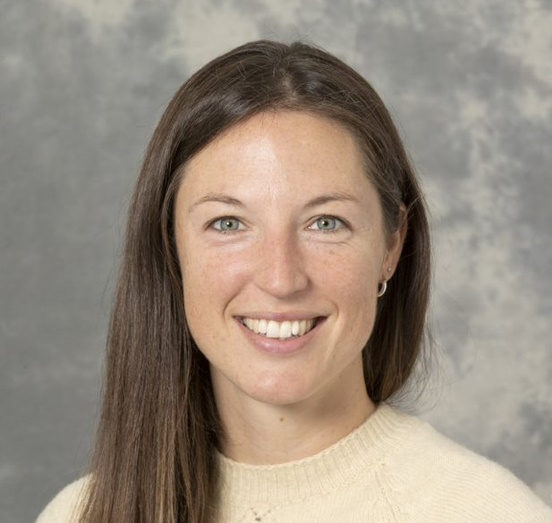
Dr Alison Fairbrass, University College London, UK

Dr Alison Fairbrass, University College London, UKDr Fairbrass specialises in environmental management, conservation science, and urban sustainability and resilience research. Her work at University College London has contributed to valuable biodiversity and natural capital research contributions. Key publications include the development of the Natural Capital Indicator Framework (NCIF) for improved national natural capital reporting (Fairbrass et al, 2020) and the implementation of a Strong Environmental Sustainability (SES) index in multiple countries. Dr Fairbrass has also contributed to cutting-edge biodiversity monitoring tools, such as the 'Shazam for Bats' IoT system for real-time monitoring (Gallacher et al, 2021) and the CityNet deep learning tool for urban ecoacoustic assessment (Fairbrass et al, 2019). In addition, Dr Fairbrass is also involved in the NERC-funded Diverse Values project, investigating how diverse values can be incorporated into UK marine decision-making. |
| 10:15-10:30 |
Discussion
|
| 10:30-11:00 |
Break
|
| 11:00-11:45 |
Contributed speakers

Professor Jon Paul Rodriguez, International Union for Conservation of Nature, Venezuela

Professor Jon Paul Rodriguez, International Union for Conservation of Nature, VenezuelaJon Paul Rodríguez has been working for the conservation of Venezuelan species and ecosystems since he was a biology undergraduate at Universidad Central of Venezuela (UCV) in the late eighties. With other students he co-founded Provita in 1987, an NGO that has championed numerous evidence-based projects, including several editions of the Red Book of the Venezuelan Fauna and of the Red Book of Terrestrial Ecosystems of Venezuela. After graduating from UCV in 1991, he went to Princeton University for a PhD in ecology and evolutionary biology (1999), and a Certificate on science, technology and environmental policy from the Woodrow Wilson School of Public and International Affairs (2000). He currently Chairs the IUCN Species Survival Commission, is Professor at the Center for Ecology of the Venezuelan Institute for Scientific Investigations (Instituto Venezolano de Investigaciones Científicas - IVIC), and continues to be active in Provita as the organisation’s President. He defines himself as a biologist that is interested in generating information useful for informing conservation policies, without being a politician. Jon Paul is author in more than 250 publications, including books, chapters, and peer-reviewed articles in major international scientific journals. 
Ms Katie Devenish, Bangor University, UK

Ms Katie Devenish, Bangor University, UKKatie Devenish is a final year PhD student at Bangor University. Her research focusses on the challenges and opportunities for reconciling mining with biodiversity conservation in Madagascar. 
Professor Tafadzwa Mabhaudhi, University of KwaZulu-Natal, South Africa

Professor Tafadzwa Mabhaudhi, University of KwaZulu-Natal, South AfricaProfessor Mabhaudhi’s research focuses on developing transformative water, energy, food and ecosystems solutions that consider trade-offs and synergies, broader systemic issues, and empower communities to develop local solutions to global problems under climate change. 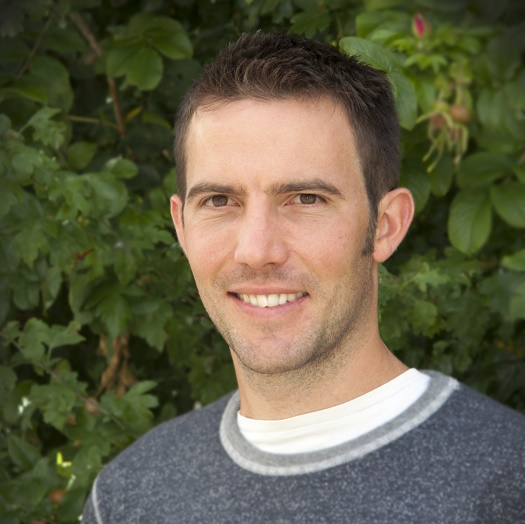
Professor Tom Oliver, University of Reading, UK

Professor Tom Oliver, University of Reading, UKProfessor Tom Oliver is the Research Dean for Environment and a Professor of Applied Ecology at the University of Reading. |
| 11:45-12:15 |
Uniting natural science and economics to support better land use decision making
While the intellectual giants of the 18th and 19th Centuries were polymaths, the 20th Century was characterised by a narrowing of perspectives in the pursuit of disciplinary excellence. This generated an unprecedented depth of knowledge, but left academia poorly equipped to deal with the inherently interdisciplinary challenges of the present century. Those fortunate enough to have worked with her quickly realised that Georgina Mace possessed a diamond clear ability to understand complex problems and bring together the diverse perspectives needed to address multifaceted challenges such as biodiversity loss and climate change. The present paper builds on that legacy by combining multiple disciplines drawn from across the natural, physical, economic and social sciences to provide the essential interdisciplinary basis needed to support land use decision making. This talk will present a quantitative integration of these disciplines, integrating their insights through an applied linkage of models providing an understanding of the drivers of land use change and consequences of altering those drivers. It will also present findings relevant to the role of land use change in bending the curve on biodiversity loss and delivering net zero emissions of greenhouse gases. While the appropriate integration of such diverse perspectives is complex, Professor Bateman will argue that it is actually the minimum set of considerations necessary to defensibly approximate to the real world and that more conventional, single-discipline, reductionist approaches typically fail Mencken’s test by producing answers that are clear, simple – and wrong. 
Professor Ian Bateman OBE, University of Exeter Business School, UK

Professor Ian Bateman OBE, University of Exeter Business School, UKIan J Bateman OBE, US-NAS, FBA, FEAERE, FRSA, FRSB, is Professor of Environmental Economics and Director of the Land, Environment, Economics and Policy Institute (LEEP) at the University of Exeter, UK. Ian has advised Defra and HM Treasury for over a decade and more recently became a member of the First Ministers’ Environmental Council for the Scottish Government. He was a member of the UK Natural Capital Committee throughout its time advising the Chancellor of the Exchequer and Secretary of State for the Environment. He was also a Board Member of the UK Joint Nature Conservation Committee. He has had nearly 200 papers published in international peer reviewed journals in leading journals in natural science, economics and interdisciplinary research. In 2013 was awarded an OBE for services to environmental science and policy and in 2021 was elected as an international member of the US National Academy of Sciences. |
| 12:15-12:30 |
Discussion
|
Chair
Dr Guy Cowlishaw, Institute of Zoology, Zoological Society of London, UK
Dr Guy Cowlishaw, Institute of Zoology, Zoological Society of London, UK
Guy Cowlishaw currently leads the Institute of Zoology as the Acting Director of Science at ZSL (Zoological Society of London). His work encompasses and integrates behaviour, ecology, and conservation, often taking an interdisciplinary approach that combines biological and anthropological perspectives. His research has included holistic studies of the bushmeat trade, to understand the importance of bushmeat to people’s livelihoods as well as its impacts on species populations, and a series of studies elucidating how intrinsic biology and extrinsic threats combine to determine extinction risk across species. He is also the founder and co-director of the Tsaobis Baboon Project, a long-term (>20 year) individual-based study of a desert baboon population and its environment in Namibia.
| 13:30-14:00 |
A path to recovery: the Kunming-Montreal Global Biodiversity Framework
The 2018 paper by Mace et al ‘Aiming higher to bend the curve of biodiversity loss’ helped to frame the discussions for the post-2020 global biodiversity framework. After four years of negotiations, governments adopted the Kunming-Montreal Global Biodiversity Framework at COP 15 in December 2022 with the mission to take urgent action to halt and reverse biodiversity loss, and by 2030 to put nature on a path to recovery for the benefit of people and planet. It includes four outcome-oriented goals for 2050 and 23 action-oriented targets for 2030. This presentation will highlight the need for a whole-of-society approach to implement the Framework and explore the challenges and opportunities for the scientific community to contribute to this critical endeavour. 
Dr David Cooper, Secretariat of the Convention on Biological Diversity, Canada

Dr David Cooper, Secretariat of the Convention on Biological Diversity, CanadaDr David Cooper is the Acting Executive Secretary of the Secretariat of the Convention on Biological Diversity (CBD). Prior to his appointment, David was the CBD Deputy Executive Secretary where he assisted the Executive Secretary by leading the strategic and planning activities, as well as the intergovernmental processes under the Convention and its Cartagena and Nagoya Protocols. David has more than 30 years of experience in environmental and agricultural science and policy, and international negotiations. As Secretary of the CBD COP 15, David was instrumental in facilitating the complex pathway that led to the adoption of the Kunming-Montreal Global Biodiversity Framework. David was a lead author for the third, fourth and fifth editions of the Global Biodiversity Outlook. He has also contributed to various assessments of IPBES and was a lead author for the Biodiversity Synthesis of the Millennium Ecosystem Assessment. |
|---|---|
| 14:00-14:15 |
Discussion
|
| 14:15-15:00 |
Contributed speakers

Dr Mwangi Githiru, Wildlife Works, Kenya

Dr Mwangi Githiru, Wildlife Works, KenyaDr Mwangi Githiru is the Director of Research, Biodiversity and Social Monitoring at Wildlife Works Global program. 
Dr Elizabeth Boakes, University College London, UK

Dr Elizabeth Boakes, University College London, UKDr Elizabeth Boakes is a UCL Centre for Biodiversity and Environmental Research (CBER) Research Fellow whose work encompasses a wide range of topics in conservation and ecology. 
Dr Joe Millard, Natural History Museum, UK

Dr Joe Millard, Natural History Museum, UKDr Joe Millard is a computational ecologist at the Natural History Museum, interested in the causes and consequences of insect biodiversity change and the power of online data in quantifying biodiversity awareness. Joe previously worked at the Leverhulme Centre for Demographic Science as a postdoctoral researcher on human sleep disruption. He completed his PhD jointly between UCL, the Institute of Zoology, and the RSPB, where he led the development of the Species Awareness Index. 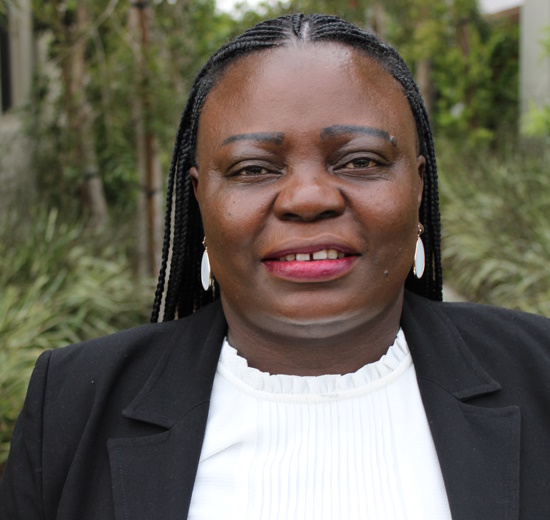
Dr Benis Egoh, UC Irvine, USA

Dr Benis Egoh, UC Irvine, USADr Benis Egoh is an Associate Professor at the University of California Irvine. As an interdisciplinary scientist, her work cuts across conservation, restoration, economics, and hydrology. She has a strong focus on policy and was actively involved in the development of a framework for mapping ecosystem services that is currently being used in 27 European Union (EU) countries. While working for European Commission, Benis’ work was pivotal in the implementation of the EU biodiversity strategy. She is both a SLOAN and HELLMAN fellow. She serves on the Executive Committee of the Ecosystem System Services Partnership (ESP) and on the IUCN Task Force on Palm Oil. She is a coordinating lead author and lead author of the IPBES Biodiversity and Business Assessment, and the IPBES African Assessment. She served on the board of the Society for Conservation Biology (SCB) Africa for ten years. |
| 15:00-15:30 |
Break
|
| 15:30-16:00 |
Meeting people’s future needs at least cost to biodiversity
Food production has a greater impact on other species than any other sector, yet how best to limit its effects is greatly contested. Reviewing progress to date in interventions to encourage less damaging diets and to cut food waste, Professor Balmford concludes that both are essential but are far from sufficient. Turning to the supply side, quantification of the population-level impacts of land-sharing, land-sparing, and intermediate and mixed approaches for almost 2000 individually-assessed species shows that across five continents, high-yield farming and sparing consistently outperform land sharing, particularly for species of highest conservation concern. Sparing also offers considerable potential for lowering greenhouse gas emissions. In working through these results Professor Balmford also identifies five uncomfortable truths for conservationists: 1) Biodiversity is already in substantially worse shape than some global metrics suggest; 2) While other drivers attract more attention, the mundane challenge of meeting people’s demand for food remains the greatest threat to wild nature; 3) Reducing demand for higher-footprint foods and cutting waste are essential, but insufficient: raising and sustaining food yields is vital if most species are to persist; 4) Because they reduce space available for natural habitats, 'wildlife-friendly' farming methods that lower yields (such as organic production) risk causing grave damage to most wild species; 5) Identifying, promoting and regulating sustainable high-yield farming systems is essential if we are to slow biodiversity’s loss (and indeed deliver the 30x30 vision), yet this will necessitate both open-minded and ambitious commitment from both government and the private sector. 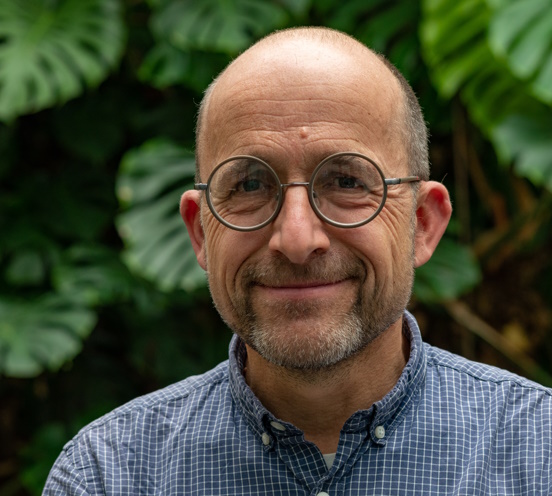
Professor Andrew Balmford FRS, University of Cambridge, UK

Professor Andrew Balmford FRS, University of Cambridge, UKAndrew Balmford is Professor of Conservation Science in the Department of Zoology, University of Cambridge, where his research focuses on how to reconcile biodiversity conservation with meeting human food needs and other land-demanding activities; the costs and benefits of retaining intact ecosystems; and identifying what works in conservation. He began working with Georgina in 1993, with their last joint paper appearing in 2020. Andrew collaborates closely with conservation practitioners and with colleagues in other disciplines, including economics and psychology. In his book Wild Hope he argues that cautious, evidence-based optimism is vital in tackling environmental challenges. Andrew helped establish the Student Conference on Conservation Science, the Cambridge Conservation Forum, Earth Optimism, and most recently the Cambridge Centre for Carbon Credits. |
| 16:00-16:10 |
Discussion
|
| 16:10-17:00 |
Panel discussion: Future science and scientists to bend the curve of biodiversity loss
Dr Ana Rodrigues, National Centre for Scientific Research, France
Dr Ana Rodrigues, National Centre for Scientific Research, FranceAna Rodrigues is a Senior Researcher at the CNRS (Centre National de la Recherche Scientifique) in Montpellier, France. Her research lies at the interface between ecology and biodiversity conservation, with the study of large-scale spatial biodiversity patterns as the unifying theme. She aims to understand the ecological, evolutionary and anthropogenic processes shaping these patterns, as well as their implications for the conservation of biodiversity. This includes a research line investigating historical human impacts on the distribution and abundance of whale species, in collaboration with historians and archaeologists.
She obtained a first degree in 1996 and MSc in 1998 from the University of Lisbon (Portugal) followed in 2002 by a PhD from the University of Sheffield (2002). She was then a postdoctoral fellow at Conservation International in Washington DC (USA), and a Marie Sklodowska-Curie fellow at the University of Cambridge (UK), before joining the CNRS as a researcher in 2009. Professor Simon Lewis, University of Leeds and University College London, UK
Professor Simon Lewis, University of Leeds and University College London, UKSimon L Lewis is Professor of Global Change Science at the University of Leeds and University College London. A plant ecologist by training, he focuses on changes to the Earth system with a central focus on the tropics. He founded and co-manages the African Tropical Rainforest Observatory, AfriTRON (www.afritron.org), a network of long-term tropical forest inventory sites across 13 countries in Africa, and co-manages the long-term forest inventory data repository and data management tool forestplots.net. He recently discovered that the central Congo basin is home to the world's largest tropical peatland complex (Dargie, Lewis et al. Nature 2017). 
Dr Sandra Lavorel, Laboratoire d’Ecologie Alpine, Université Grenoble Alpes, Université Savoie Mont-Blanc, CNRS, France

Dr Sandra Lavorel, Laboratoire d’Ecologie Alpine, Université Grenoble Alpes, Université Savoie Mont-Blanc, CNRS, FranceSandra Lavorel is a functional ecologist known for her pioneering work on plant functional traits, taking them from concepts to the discovery of patterns of spatial and temporal variation across scales, and of their effects on ecosystem functions that underpin people’s quality of life. In recent years, she has focused on nature-based adaptation to climate change. Throughout her career she has been involved in global change science coordination and in assessments for science-policy interface, including IPBES. Sandra is a member of the French Academy of Sciences and of the US National Academy of Sciences. She was awarded Honorary Membership of the British Ecological Society and nominated for the Margalef Prize in Ecology in 2020, and was in 2021 a co-nominee of the BBVA Foundation Frontiers of Knowledge Award in Ecology. 
Professor Ian Bateman OBE, University of Exeter Business School, UK

Professor Ian Bateman OBE, University of Exeter Business School, UKIan J Bateman OBE, US-NAS, FBA, FEAERE, FRSA, FRSB, is Professor of Environmental Economics and Director of the Land, Environment, Economics and Policy Institute (LEEP) at the University of Exeter, UK. Ian has advised Defra and HM Treasury for over a decade and more recently became a member of the First Ministers’ Environmental Council for the Scottish Government. He was a member of the UK Natural Capital Committee throughout its time advising the Chancellor of the Exchequer and Secretary of State for the Environment. He was also a Board Member of the UK Joint Nature Conservation Committee. He has had nearly 200 papers published in international peer reviewed journals in leading journals in natural science, economics and interdisciplinary research. In 2013 was awarded an OBE for services to environmental science and policy and in 2021 was elected as an international member of the US National Academy of Sciences. |




